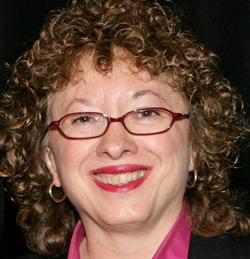In 1987, the Butler County native brought the business back to Pennsylvania, operating in Washington County ever since.
Channel Craft manufactures vintage-style toys such as jacks, Tiddlywinks, yo-yos and pick-up sticks out of woods like tulip poplar and rock maple. Many are packaged in retro-style tin boxes, and include instructions and the history of the toy. The company also produces educational games, puzzles and book replicas of historical documents.
And, of course, they still make boomerangs that always come back. Channel Craft’s products are sold in specialty stores, museums and other travel destinations.
The fact that the business has lasted and grown proves that children can still find delight in the analog toys their grandparents and great-grandparents enjoyed.
What inspired you to start Channel Craft?
I got involved in a marketing project in my first semester of business school at West Virginia University (WVU). The project was how to take a product through the channels of distribution, from raw materials to the moment the consumer sees it.
I was making boomerangs at the time. I knew as a kid that they were supposed to return, but most of the ones I had didn’t — they were mostly tourist-trap toys. I felt that if I could get it to return and create another fad from it, I could have a business on campus.
I used my grandfather’s woodworking tools, set up a step van and made boomerangs there in the parking lot behind my apartment. I soon had the funds to rent a garage from my neighbor for $25 a month. I hired college students to help sand boomerangs and then I took them to festivals on the weekends to promote and sell them.
I joined the U.S. Boomerang Association, which was in its infancy at the time. They actually won against the Australians in their own sport. I brought the excitement of that back to campus and started the Mountaineers Boomerang Club.
We got a lot of people interested, some in the history of it, some in the science of it, which is intriguing. I was into the sport of it and the marketing of it. It’s something everyone can enjoy; you don’t have to be a tremendous athlete to enjoy it.
I sold at bluegrass festivals, and then I’d put on “boomerang jams” with a keg of beer, some college kids and some bluegrass musicians. With a bunch of woodworking equipment I’d teach people to make their own boomerangs, try them out and compete with them for the longest distance, the most accurate, and so on. We did boomerang juggling.
I was testing the waters. I could do some great promotions at WVU. Every time we had an event, we could work with the university radio station and newspaper. I got to test the channels of media.
So by the time I finished college, I was making about $130,000 worth of boomerangs a year. I got a propane heater for the garage, so I was able to work over Christmas vacations. I spent the last half of my college career doing trade shows and festivals, and seeking vendors and other craftsmen to expand my line of toys and my manufacturing capabilities.
Did you take advantage of any resources to get your company off the ground?
When I decided I wanted to go into business, I invested in a $400 step van with a blown engine. I got friends to help me rebuild it — I built living quarters and a shop inside of it, and started peddling boomerangs. I made really good money, enough to keep going to school, and I met other people with other products that I could distribute.
I took the “Channels of Distribution” term paper to a banker in Morgantown, West Virginia, and he was interested in what I was doing and let me use the paper as my proposal for an SBA loan. He backed up a $10,000 loan with an SBA guarantee.
When I moved everything back to Pennsylvania, it was during the first of three recessions I’ve experienced. It was real tough to come up with bank loans. I was fortunate enough to find a small building with two apartments above a former diner in Ellsworth, Washington County. I was able to buy it for $27,000 with help from my grandmother. I raised my family in one of the apartments and my shop manager from Morgantown lived in the other. We hired half a dozen people in the area.
How has the company grown?
In two years we outgrew that first building, and rented two buildings in Cokeburg. Then in 1991, [the late] Congressman Frank Mascara found a building for me on the other side of Washington County, in Charleroi. He went to Ingersoll Rand [a diversified industrial corporation specializing in HVAC and other products] in New Jersey and negotiated with them to sell me the property at a price I could afford.
Ten years ago, we built a new warehouse, so we have three buildings (about 35,000 square feet in total), and now we’re able to employ 30 to 40 people, who produce lines from wood and other raw materials, and then assemble, finish, package and store them.
We have about 9,800 current accounts for retailers who buy our products, sell them and re-order, give us space in their stores for our displays and keep them well stocked, and that’s what keeps us in business.
Do you do any direct sales to customers online?
Through a program called Shopatron, individuals can visit our website and look at the wholesale catalog, which includes retail prices on the items. You can place an order online, and it gets sent to our retailers within a 60-mile radius of where you live, and they fulfill the order for us.
Our products are sold at Bass Pro Shops, Cabela’s, Cracker Barrel and Hobby Lobby; this Christmas we have Pottery Barn and Restoration Hardware, among many others.
We also sell to tourist destinations like Williamsburg and Jamestown, Va.; Mt. Vernon; and museums such as the Children’s Museum of Pittsburgh or the Franklin Institute in Philadelphia.
What has been the biggest challenge so far?
The biggest challenge we’ve had is big customers going out of business and not paying us. It’s been really tough. For a couple of years in the ’90s I had credit insurance and I was able to float through a couple of major mall retailers going out of business.
Now I’m very careful who I work with. I don’t extend credit unless I know it’s going to work out all the way through. There are a lot of opportunities we have to turn our backs on. There are department stores who have had great success, and those who filed Chapter 11 [bankruptcy] and didn’t pay us.
What’s the big differentiator for your company?
We’ve come up with some really unique products that are very retro — that were played back in the ’40s, ’50s and ’60s. Most of the parents now weren’t alive even in the ’60s. A lot of people call our products “grandma gifts,” because they’re bought by people who want their grandkids playing with products that don’t require electronics.
I want to stick to that tradition, and make sure that every kid has a chance to shoot marbles and play jacks and pick-up sticks, before they get a smart phone.
There’s a lot of stuff that’s coming from China, India and Mexico that’s an interpretation of authentic American toys. But a truly authentic American toy has to be created by an American craftsman. There’s a history and a legacy behind it.
Writer: Susan L. Pena

http://www.channelcraft.com/
601 Monongahela Ave. Charleroi, PA 15022


